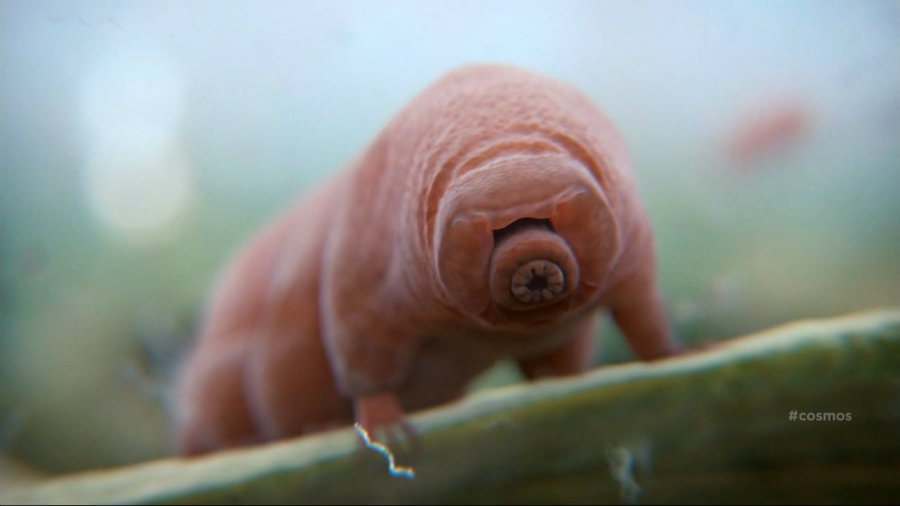According to scientists, it is challenging that life on Earth disappears, which has been one of their biggest topics for discussion. They say that it would require a quantity of energy so large that it would make oceans boil, but even then organisms called tardigrades might survive this kind of compelling astrophysical events.
Scientists estimate that it would take an energy of 6 x 1022 joules to make the Earth boil. This quantity is 100 times the energy consumed by the entire human species in a year, or a trillion times the energy used by space ships to lift off. The aftermath of such an event would be even worse due to constant Tsunamis and dust clouds that would block the sun rays. Even then, there would be any form of life?

How resilient is life on Earth?
‘When’ and ‘how’ life on Earth is going to be over is a question that can’t be answered right now, but scientists have been wondering for many years. They say that if a giant asteroid crashed into the Earth, it would probably kill most of the animals, right at that moment. However, the consequences of such catastrophe would end up killing the remaining ones, because of the unbalanced environment and the lack of the sun in the Earth. This is sort of what happened 65 million years ago when the dinosaurs were wiped out along with 75 percent of the species. However, it was clear that a lot of them survived and managed to live today.
Scientists believe that actually to wipe life off the Earth; it would take such an amount of energy that it would make oceans boil, the heat and the radiation it would exist would not allow any organism to survive.

“They’ve taken a grand question—how resilient is life?—and turned [it] into a well-posed calculation, by focusing on the energy required to boil Earth’s oceans,” says Joshua Winn, an exoplanets expert at Princeton University, who was not involved in the study. “It’s an awful lot of energy.”
This amount of energy would be produced by an asteroid as big as Vesta or Pallas, which is the largest asteroid in the solar system. This enormous amount of energy could also be generated by exploding stars known as supernovae or gamma ray bursts. They explode in outer space.
The Earth is not close to an end
Luckily, none of these options seem very likely to occur, according to scientists. There are asteroids that, because of their size, are capable of make species in earth disappear in a blink of an eye. However, none of these big asteroids are headed towards this planet, said study author and astrophysicist Avi Loeb of Harvard University.
Loeb also explains that a supernova can easily evaporate all the water on Earth. However, the explosion of these stars would have to occur very close to Earth, to be precise just 0.13 light-years away, and this is about 30 times near to our solar system than the position of the closest exploding star.
“It really is pretty hard to sterilize a planet,” says Gregory Laughlin, an astronomer at Yale University who was not involved in the study.
Would the tardigrades die in these type of catastrophe?
Milnesium tardigradum or Tardigrades are microscopic creatures that live in the water and are also known as water bears. They are known to be one of the hardest living beings to kill since they are capable of enduring temperatures as cold as -272°C and as hot as 150°C. This would make the Tardigrades the animals that are most likely to survive on Earth. They would even survive in the vacuum of outer space for several days.
They can stand high levels of radiation that are thousand times the levels that would be lethal to humans. They can endure six times the pressure existing at the bottom of the oceans. Therefore, they sole existence makes almost impossible the annihilation of life on Earth.
These incredible and breathtaking capacities might be possible thanks to a mechanism that allows Tardigrades to repair their DNA. Scientists don’t know yet what it is exactly.

Nonetheless, the resistance of tardigrades has increased the interests of scientists on this kind of organisms. For example, study author, David Sloan, said that the existence of tardigrades can guide their search for alien creatures.
“This really broadens the range of places where we should be looking for life”, said Sloan, who is also a cosmologist at the University of Oxford in the United Kingdom. “I have an optimistic view about life”.
According to Sloan, there are organisms besides the tardigrades that can live in extreme conditions and can resist catastrophes, even the ones that could be produced by human beings such as global warming and a nuclear war. Therefore, he says that this kind of organisms might allow life on earth to survive and resists the mistakes that people make in politics.
Source: Science
